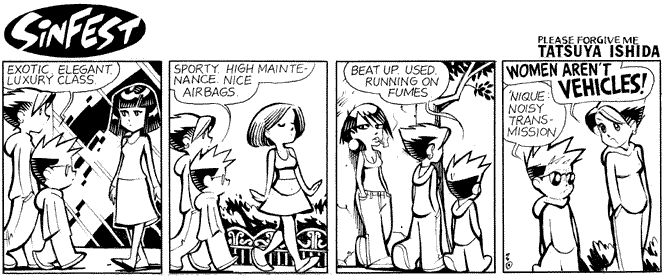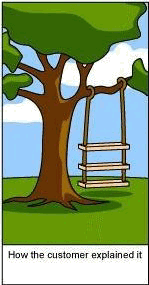
I'm going to get in trouble for this one


The beaver is a proud and noble animal
Notes from a bemused canuck


Observers, Artists, Critics Rank Children's Paintings With the Masters
Mar. 11, 2005 – People got very excited about Christo's latest public art work, “The Gates,” in New York's Central Park. For two week's 7,500 metal gates draped with orange fabric were staked along 23 miles of the park's footpaths. Some people called “The Gates” a masterpiece. Others called it an ugly nuisance.
New York Post columnist Andrea Peyser said all the orange fabric on “The Gates” made it look like an ad for Home Depot.
New York City Mayor Michael Bloomberg (R) was annoyed by the criticism. “Nobody's criticizing this. Everybody likes it. And this is certainly art,” he said.
It is? Well, I kinda like it, but how does the mayor know that “The Gates” is really art, and not just shower curtains on poles? Do people really know what's art and what's just stuff?
We ran a test.
On ABCNews.com, we showed four reproductions of art works that are considered masterpieces of modern art along with six pieces that will never make it into any museum. We asked viewers to decide which work was art and which was not.
I assumed the famous art would get the most votes if only because art lovers would recognize them, but they didn't. Most got far fewer votes than the winner.
The one that received the most votes as a “real” artwork was a piece of framed fabric “20/20” bought at a thrift store for $5.
We also conducted the test with New Yorkers at Manhattan Mall. We asked people to tell us which art works they'd expect to see in a museum. We included copies of the famous paintings, plus some other items.
How do critics and curators decide which is art?
How do they determine that Damien Hirst's embalmed shark and sliced cow carcasses are art?
Why is Willem de Kooning's “A Tree in Naples,” which we included a reproduction of in our quiz, worth millions, when a more realistic looking landscape, done by elephants with paintbrushes in Thailand, is worth much less?
I asked an art historian: Why is De Kooning's “A Tree in Naples” art? The work doesn't look like a tree, let alone Naples.
“But if you look closely, you might say this brown part is the bark of the tree. You might say the blue is the sky. Maybe that's, maybe that's the case and maybe it's not. But you bring to it whatever feelings that this evokes,” said Samantha Hoover, an art historian at New York's School of Visual Arts.
What about Kasimir Malevich's Black Circle, which we also included in the online quiz? “He was saying I want to free art from telling a story,” said Hoover.
So it's just all in the eye of the beholder?
“I wouldn't say it's all in the eye of the beholder,” Hoover said. “I think you need to know the story behind the work to understand its full impact and meaning.”
OK, I can get that concept. Watching Ed Harris' performance in the film about famous artist Jackson Pollock, I learned that Pollock's creative genius came from his tortured soul. That led to a big breakthrough in modern art. But do the people who pay millions for Pollock's work really see the difference between his dripping colors and a child's painting?
Four of the art works in our test were done by 4-year-olds, and when we showed their artwork on the Web, and showed it to people at the mall, the kids' work ranked ahead of most of the masters.
I assumed real artists wouldn't fall for the trick, so we invited some to take our test. Most of them also put at least some of the kids' work up there with the masters.
One artist, Victor Acevedo, described one of the children's pieces as “a competent execution of abstract expressionism which was first made famous by de Kooning and Jackson Pollock and others. So it's emulating that style and it's a school of art.”
When I told him the work was done by a 4-year-old he said, “That's amazing. Give that kid a show.”
Actually, it was a collaboration. Maybe they should give Hannah and Haley, the two 4-year-old girls who painted it, a show of their own. More than 1,800 people said their work was great art.
And even Hoover, the art historian, ranked one of the children's paintings among the real artworks. When I told her who did the work she said, “It has good composition. I think it has good depth and space.”
So can anybody explain to me why people want to spend millions of dollars on abstract art if any 4-year-old could create something great?
“There's some art that's validated by the establishment or by the media and then there's the rest,” said artist Deborah Gilbert.
But maybe the establishment is out to lunch.
An artist who calls himself Flash Light told me, “The function of art is to make rich people feel more important.”
Well, if rich people want to spend their own money this way, fine.
But you should know that you're contributing your money too. The politicians may say they're starved for funds, but they're still giving your hard-earned tax dollars to museums that exhibit these kinds of things.
Which makes me and some of our testers say: Give Me a Break!
Original link: http://abcnews.go.com/2020/print?id=563146